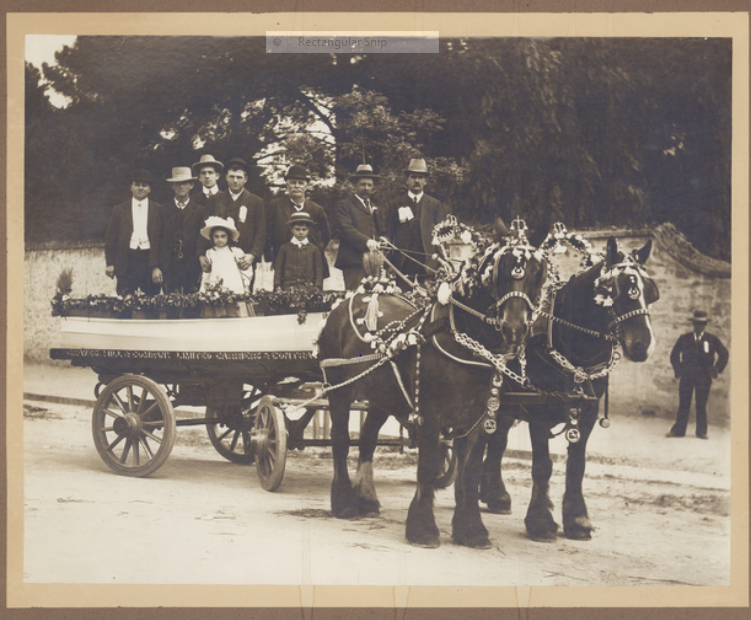The Shire Horse

Background Breeds
Janet Lane on Waler Data Base @ Facebook. Image: Bramhope Samson, The Australasian, April 1911
The Shire Horse. Continuing a look at Waler ancestors…
Some say Shires and Clydesdales are much the same, however there are differences. Shires were called “English Cart Horses” when the studbook started in 1878; records had been kept for some time – some pedigrees going back to 1800. Developed in the shires of England. When researching, one wonders if the many ‘cart horses’ imported here in colonial days were indeed Shires.


Shires went to the mighty Black Horse of Britain, supposedly bred to carry knights, jousting was the most popular sport for centuries. Research and archaeological studies of shoe and bit size show a horse more like a hunter or big Welsh cob however, so most likely the Black Horse was not a knight’s horse after all. Intriguing are the myths of history!
Next, Robert Bakewell (1725-1795) took them on. He wanted – and created – a powerful draught horse to work much faster than bullocks. Bakewell bred good temperament into all his horses, believing it as important as good conformation, and started the system of travelling stallions which helped spread the breed. Nor was he the only man doing it – others brought in heavy draughts from Holland and Germany – most were coach horses, coaches being incredibly heavy then, and crossed them to the old Black Horse.
As there was resistance to buying the breed in Ireland because of the name, this was a big factor in the name change from English Cart Horse to Shire Horse in 1884.
Image: The Australasian, May 1883



A tall strong draught with feather, for both cartage and agricultural work, a breed which always had a sensible breed organisation – keeping out problems like greasy heel, excessive feather, coarse feather (must be fine and silky) excessive white, blue eyes, congenital faults, conformation faults and so on. Less white than most Clydesdales and without roaning, being whole coloured – blacks, bays, browns and greys, although leg and facial white seen. Once known for short legs, being leggy regarded as a fault. Good shoulders. A tremendous walk, and when required to trot, have excellent impulsion – known to trot like a Norfolk roadster (a great compliment) without the speed.
Image: Katherine. Leader, Melbourne, August 1912



Good shoulders, quarters, barrel, gaskins, bone. Like the pure Clydie, perhaps a little too big and too slow, pure, for many places in Australia unless heavy slow work was required – but perfect to cross – hence we had an incredible amount of fabulous draught horses now called the Australian Draught, bred from these iconic breeds. A surprising amount came here, many often erroneously called Clydesdales and even registered as them at times. Never as popular hence common here as the Clydesdale however.
Image: Quarrington Chatsworth. The Australasian, April 1914
This was an exceptionally good horse. It says a lot for those who confused the breeds, that often in the press he was called a Clydesdale. One wonders how many horses were thus identified wrongly. His progeny, both mares and stallions, went all over Australia.


Queensland Country Life, October 1909
Note : England’s Glory was a black Lincolnshire horse, a draught, and a good stallion of his direct line came to Australia in 1867. As well as being big strong workers, these Lincolnshire Blacks were also noted for exceptionally strong legs and feet, doing a lot of road work, and for their superb action. It’s thought they went back to chariot ponies. They never had a studbook formed, but went into the Shire and other breeds. This stallion would have done a lot here. No doubt some blood went into some Walers. Great genetics.
Shires are a magnificent, gentle, handsome, powerful breed and much loved. Their noble profile and long kind face, robust build, good shoulders, mighty gaskins and excellent bone was seen in many heavier Walers bred for work and artillery; with a little iconic feather. A truly tremendous ancestor of the Waler.


